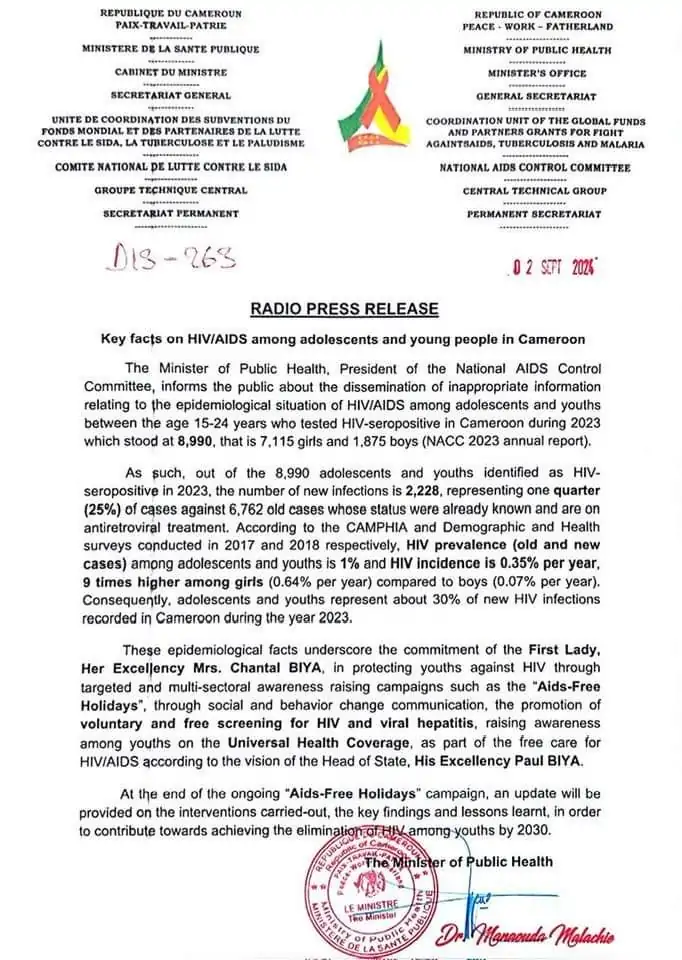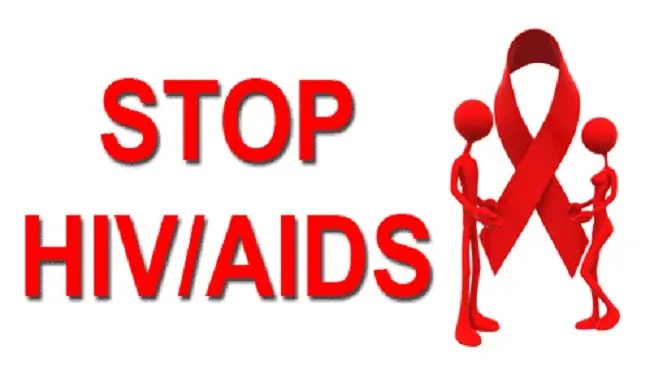By Tata Mbunwe
New data from Cameroon’s Ministry of Public Health (MINSANTE) indicates that 8,990 adolescents, aged 15 to 24, were HIV positive in 2023.
According to a release dated September 2, 2024, by Public Health Minister Dr. Manaouda Malachie, 2,228 new HIV cases were recorded among adolescents in 2023, adding to the 6,762 who were already receiving antiretroviral treatment.
“Of the 8,990 adolescents and youths identified as HIV-seropositive in 2023, 2,228 represent new infections, accounting for one quarter (25%) of cases, while 6,762 were pre-existing cases already on antiretroviral treatment,” the MINSANTE release stated.
Citing health surveys conducted by the Cameroon Population-based HIV Impact Assessment (CAMPHIA) in 2017 and 2018, the Ministry highlighted that the HIV prevalence rate among adolescents and youths is 1%, with an incidence of 0.35% per year.
Female adolescents appeared more vulnerable to HIV infections.
A 2023 report by the National Aids Control Committee (NACC) revealed that 7,115 of the adolescents who tested positive last year were girls, while 1,875 were boys.
The data shows that prevalence is nine times higher among girls (0.64% per year) compared to boys (0.07% per year).
In 2022, Cameroon had an estimated 480,232 people living with HIV, according to the World Health Organization (WHO), with 9,905 new cases reported that year.
Adolescents accounted for 30 percent of the new HIV infections recorded in 2023.
POSITIVE STRIDES IN HIV PREVENTION
In a report published in December 2023, the WHO noted that Cameroon has made significant strides in HIV prevention as the country works toward ending the epidemic by 2030.
“Although still a major public health issue, encouraging progress includes a 50% decrease in HIV prevalence among people aged 15 to 64 over the past 14 years,” the WHO reported.

The Ministry of Public Health credits the progress to public campaigns and awareness efforts, particularly the Aids-Free Holiday campaign led by First Lady Chantal Biya.
HIV prevalence in Cameroon dropped from 5.4 percent in 2004 to 4.3 percent in 2011, and 2.7 percent in 2018, according to the 2018 Demographic Health Survey (DHS).
“These epidemiological facts highlight the commitment of the First Lady, Her Excellency Mrs. Chantal BIYA, in protecting youths against HIV through targeted awareness campaigns such as the ‘Aids-Free Holidays,’ which promote voluntary and free HIV screening, social and behavior change communication, and raise awareness on Universal Health Coverage,” the Ministry stated.
Despite the positive strides, the WHO pointed out that combating inequalities remained a challenge in the fight against HIV in Cameroon.
Vulnerable groups, such as internally displaced persons, are particularly at risk due to limited access to HIV care, and a lack of awareness.



